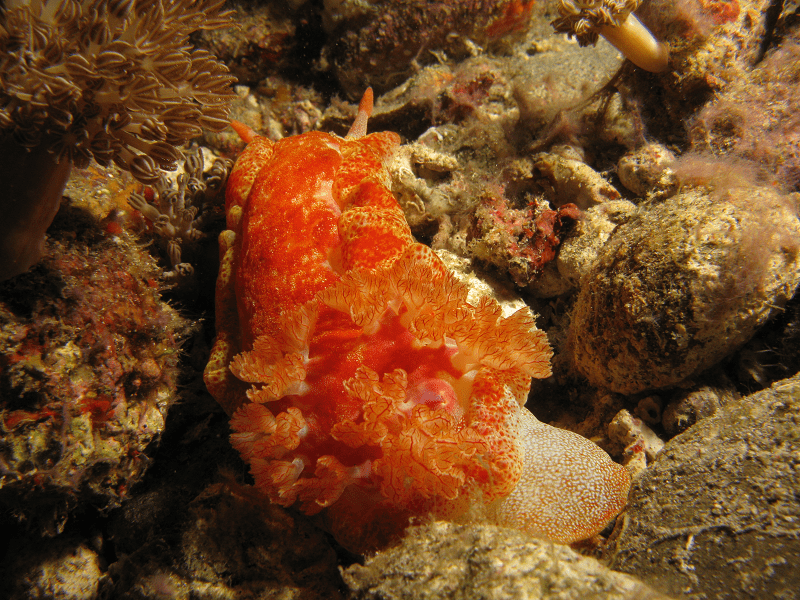Spanish Dancer Facts
- The truly visually stunning Spanish Dancer ranks as a comparatively large and brilliantly colored species of beautiful nudibranch. The remarkable creature also goes by the tongue-twisting scientific name of the Hexabranchus sanguineus.
- The distinctive swirling motion that the fascinating animal uses to swim serves as the source of the vividly descriptive common name. This incredible species further appears to be completely unique among the many types of sea slugs.
- Not only does this creature crawl across the ocean floor, it also has the ability to swim freely through the ocean. In fact, to date, it remains the only known species of nudibranch to possess this ability. The reason for this ability also baffles researchers.
- Quite fortunately, for the moment, the Spanish Dancer appears to have a sufficient and relatively stable population base. Therefore, the IUCN does not presently have a listing for it on the organization’s Red List of Threatened Species.
- Like many species, it nonetheless faces serious threats to its continued existence. Primarily, like many other species, it remains vulnerable to the ongoing effects of climate change. Other concerns, such as habit loss, also play a role, though.
Related Articles
Spanish Dancer Physical Description
Perhaps worthy of note is the fact that, like other forms of nudibranch, the stunning Spanish Dancer evolved as fully hermaphroditic in nature. The physiological principle of sexual dimorphism therefore does not apply to this particular animal.
As a result, this marine gastropod mollusk must rely upon factors other than physical appearance to stand out from its many related species around the world. Fortunately for it, the Spanish Dancer ranks as one of the largest of all currently known nudibranches.
That holds true due to the fact that mature specimens attain lengths of as much as 35.4 in (90 cm). Yet, a more common length equals about 11.8 in (30 cm). Meanwhile, individuals mainly show a brilliant shade of red, with orange shadings. But, a yellow variant does exist.
- Kingdom: Animalia
- Phylum: Mollusca
- Class: Gastropoda
- Order: Heterobronchia
- Family: Hexabranchidae
- Genus: Hexabranchus
- Species: H. sanguineus
Spanish Dancer Distribution, Habitat, and Ecology
Quite fortunately, the beautiful Spanish Dancer appears to inhabit a moderately broad range of habitation. That’s true because evidence indicates that it lives in specific portions of both the Red Sea and the Indo-Pacific Ocean.
More precisely, though, this dazzling gastropod commonly appears in the waters off the coasts of Australia and Africa. It also thrives in the waters around Japan and Hawaii. Plus, this amazing form of life also has very specific preferences for its choice of where to live.
That situation holds true due to the fact that the amazing ocean denizen typically prefers to live in an unusual habitat. That’s rocky areas and coral reefs. This wonder also prefers this environment to be filled with many sponges and places of shelter.
However, it also only lives in regions with depth of no more than 164 ft (50 m). The reason the Spanish Dancer prefers to have numerous sponges in its area is simple. To be precise, it evolved as a highly specialized predator that feeds almost exclusively on sponges.
This amazing form of life has also developed a unique form of defense in that it routinely preys upon toxic jellyfish and sponges, being immune to their toxins. The animal then assimilates the poison into its own body and uses it in its own defense.
Species Sharing Its Range
Check out our other articles on 7 Geological Marvels of Asia, Inaccessible Island Rail, Hogenakkal Falls, Wax Currant, Marbled Cat, Saint Francis Satyr Butterfly, Vietnamese Mossy Frog

